Lie Optimal Solutions of Heat Transfer in a Liquid Film over an Unsteady Stretching Surface with Viscous Dissipation and an External Magnetic Field †
Abstract
1. Introduction
2. Derivation of Lie Point Symmetries and Invariants for Flow Model
3. Results and Discussion (Homotopy Analytic Solutions)
4. Conclusions
Author Contributions
Funding
Institutional Review Board Statement
Informed Consent Statement
Data Availability Statement
Conflicts of Interest
References
- Noor, N.F.M.; Abdulaziz, O.; Hashim, I. MHD flow and heat transfer in a thin liquid film on an unsteady stretching sheet by the homotopy analysis method. Int. J. Numer. Methods Fluids 2010, 63, 357–373. [Google Scholar] [CrossRef]
- Rosmila, A.B.; Kandasamy, R.; Muhaimin, I. Lie symmetry group transformation for MHD natural convection flow of nanofluid over linearly porous stretching sheet in presence of thermal stratification. Appl. Math. Mech. 2012, 33, 593–604. [Google Scholar] [CrossRef]
- Sahoo, B. Flow and heat transfer of a non-Newtonian fluid past a stretching sheet with partial slip. Commun. Nonlinear Sci. Numer. Simul. 2010, 15, 602–615. [Google Scholar] [CrossRef]
- El-Hawary, H.M.; Mahmoud, M.A.A.; Abdel-Rahman, R.G.; Elfeshawey, A.S. Similarity Analysis for Effects of Variable Diffusivity and Heat Generation/Absorption on Heat and Mass Transfer for a MHD Stagnation-Point Flow of a Convective Viscoelastic Fluid over a Stretching Sheet with a Slip Velocity. Math. Probl. Eng. 2013, 2013, 239847. [Google Scholar] [CrossRef]
- El-Aziz, M.A.; Afify, A.A. Effects of Variable Thermal Conductivity with Thermal Radiation on MHD Flow and Heat Transfer of Casson Liquid Film Over an Unsteady Stretching Surface. Braz. J. Phys. 2016, 46, 516–525. [Google Scholar] [CrossRef]
- Hassan, H.S. Symmetry Analysis for MHD Viscous Flow and Heat Transfer over a Stretching Sheet. Appl. Math. 2015, 06, 78–94. [Google Scholar] [CrossRef]
- Raju, C.S.K.; Sandeep, N.; Sugunamma, V.; Babu, M.J.; Reddy, J.R. Heat and mass transfer in magnetohydrodynamic Casson fluid over an exponentially permeable stretching surface. Eng. Sci. Technol. Int. J. 2016, 19, 45–52. [Google Scholar] [CrossRef]
- Ganesh, N.V.; Ganga, B.; Hakeem, A.A. Lie symmetry group analysis of magnetic field effects on free convective flow of a nanofluid over a semi-infinite stretching sheet. J. Egypt. Math. Soc. 2014, 22, 304–310. [Google Scholar] [CrossRef]
- Kohilavani Naganthran, A.Z.; Basir, M.F.; Shehzad, N.; Nazar, R.; Choudhary, R.; Balaji, S. Concentration Flux Dependent on Radiative MHD Casson Flow with Arrhenius Activation Energy: Homotopy Analysis Method (HAM) with an Evolutionary Algorithm. Int. J. Heat Technol. 2020, 38, 785–793. [Google Scholar] [CrossRef]
- Safdar, M.; Taj, S.; Bilal, M.; Ahmed, S.; Khan, M.I.; Ben Moussa, S.; Fadhl, B.M.; Makhdoum, B.M.; Eldin, S.M. Multiple Lie symmetry solutions for effects of viscous on magnetohydrodynamic flow and heat transfer in non-Newtonian thin film. Open Phys. 2023, 21, 20220244. [Google Scholar] [CrossRef]
- Taj, S.; Khan, M.I.; Safdar, M.; Elattar, S.; Galal, A.M. Lie symmetry analysis of heat transfer in a liquid film over an unsteady stretching surface with viscous dissipation and external magnetic field. Waves Random Complex Media 2022, 35, 1–16. [Google Scholar] [CrossRef]
- Stephani, H. Differential Equations: Their Solution Using Symmetries; Cambridge University Press: Cambridge, UK, 1989. [Google Scholar]
- Hydon, P.E.; Hydon, P.E. Symmetry Methods for Differential Equations: A Beginner’s Guide; Cambridge University Press: Cambridge, UK, 2000. [Google Scholar]
- Duque, O.M.L.; Hernández, D.A.G.; Loaiza, G.; Acevedo, Y. Optimal system, reductions and Lie algebra classification for Kudryashov–Sinelshchikov equations of second order. Ex. Counterexamples 2021, 1, 100033. [Google Scholar] [CrossRef]
- Wang, F.; Safdar, M.; Jamil, B.; Khan, M.I.; Taj, S.; Malik, M.Y.; Alqahtani, A.S.; Galal, A.M. One-dimensional optimal system of Lie sub-algebra and analytic solutions for a liquid film fluid flow. Chin. J. Phys. 2022, 78, 220–233. [Google Scholar] [CrossRef]
- Liao, S. Beyond Perturbation: Introduction to the Homotopy Analysis Method; Chapman and Hall/CRC: Boca Raton, FL, USA, 2003. [Google Scholar]
- Wang, C.; Pop, I. Analysis of the flow of a power-law fluid film on an unsteady stretching surface by means of homotopy analysis method. J. Non-Newton. Fluid Mech. 2006, 138, 161–172. [Google Scholar] [CrossRef]
- Liu, I.; Megahed, A.M. Homotopy perturbation method for thin film flow and heat transfer over an unsteady stretching sheet with internal heating and variable heat flux. J. Appl. Math. 2012, 2012, 418527. [Google Scholar] [CrossRef]
- Sreelakshmi, K.; Sarojamma, G.; Murthy, J.V. Homotopy Analysis of an Unsteady Flow Heat Transfer of a Jeffrey Nanofluid Over a Radially Stretching Convective Surface. J. Nanofluids 2018, 7, 62–71. [Google Scholar] [CrossRef]
- Safdar, M.; Ijaz Khan, M.; Khan, R.A.; Taj, S.; Abbas, F.; Elattar, S.; Galal, A.M. Analytic solutions for the MHD flow and heat transfer in a thin liquid film over an unsteady stretching surface with Lie symmetry and homotopy analysis method. Waves Random. Comp. Media 2022, 33, 442–460. [Google Scholar] [CrossRef]

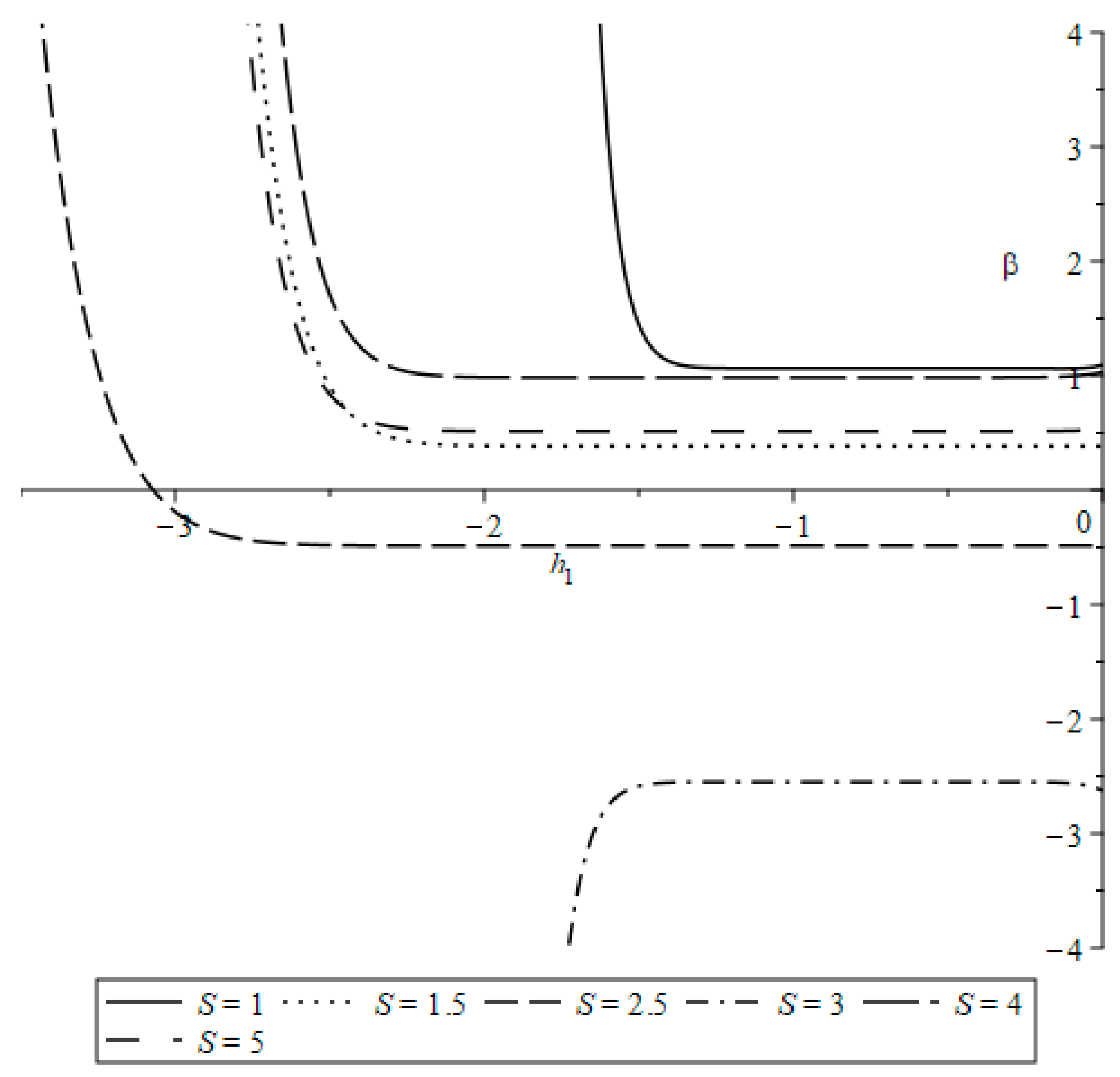

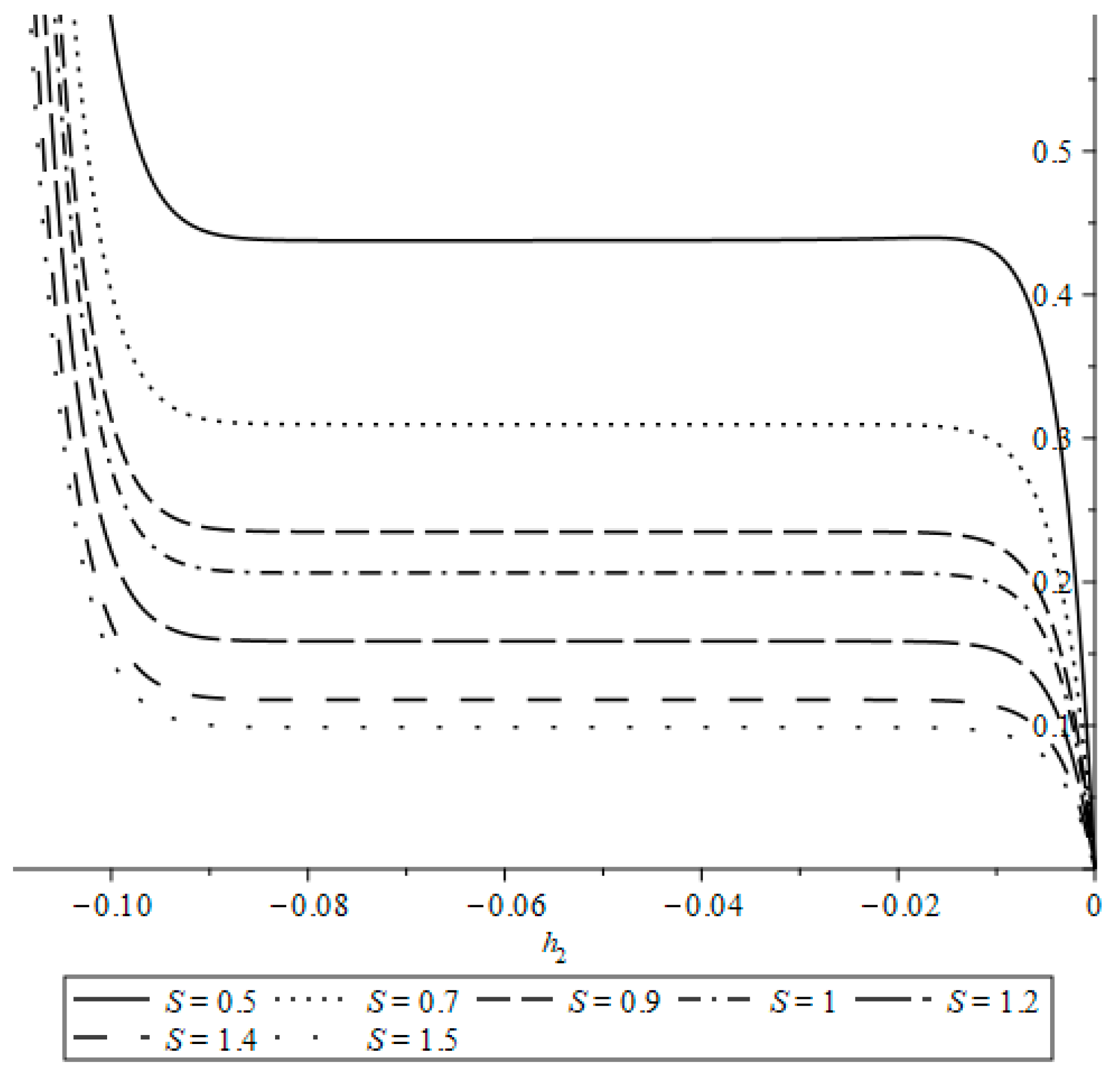

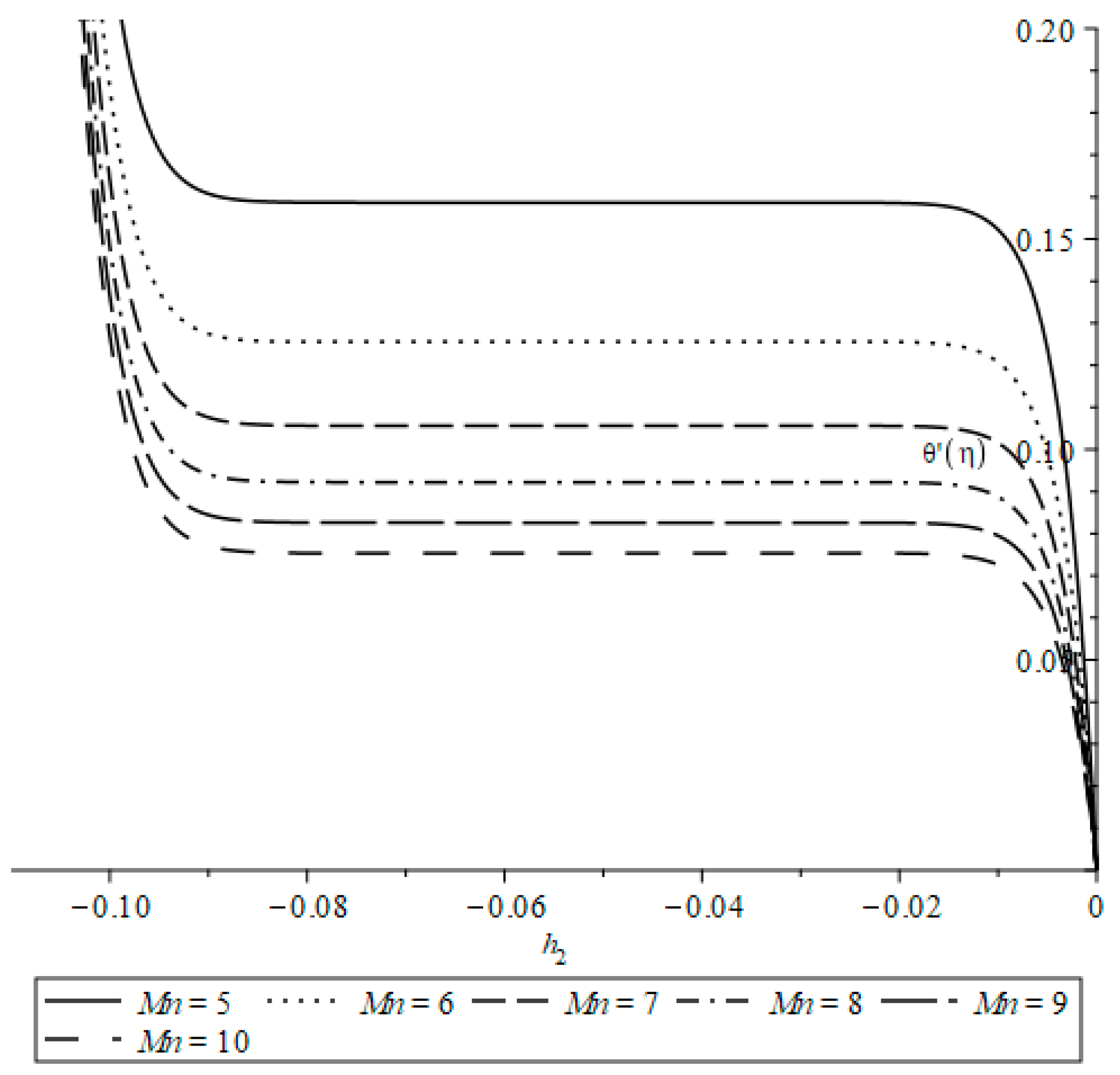
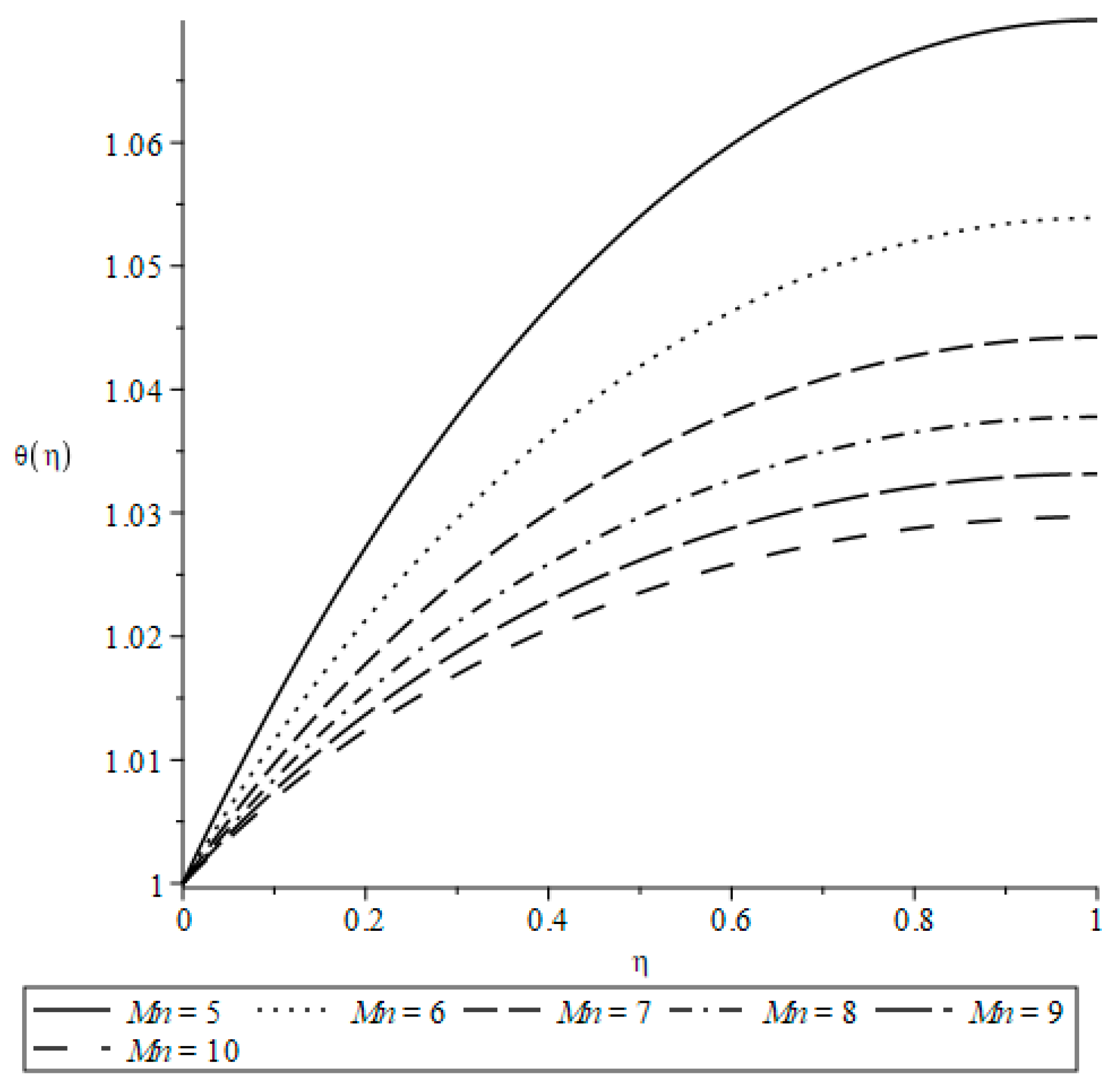
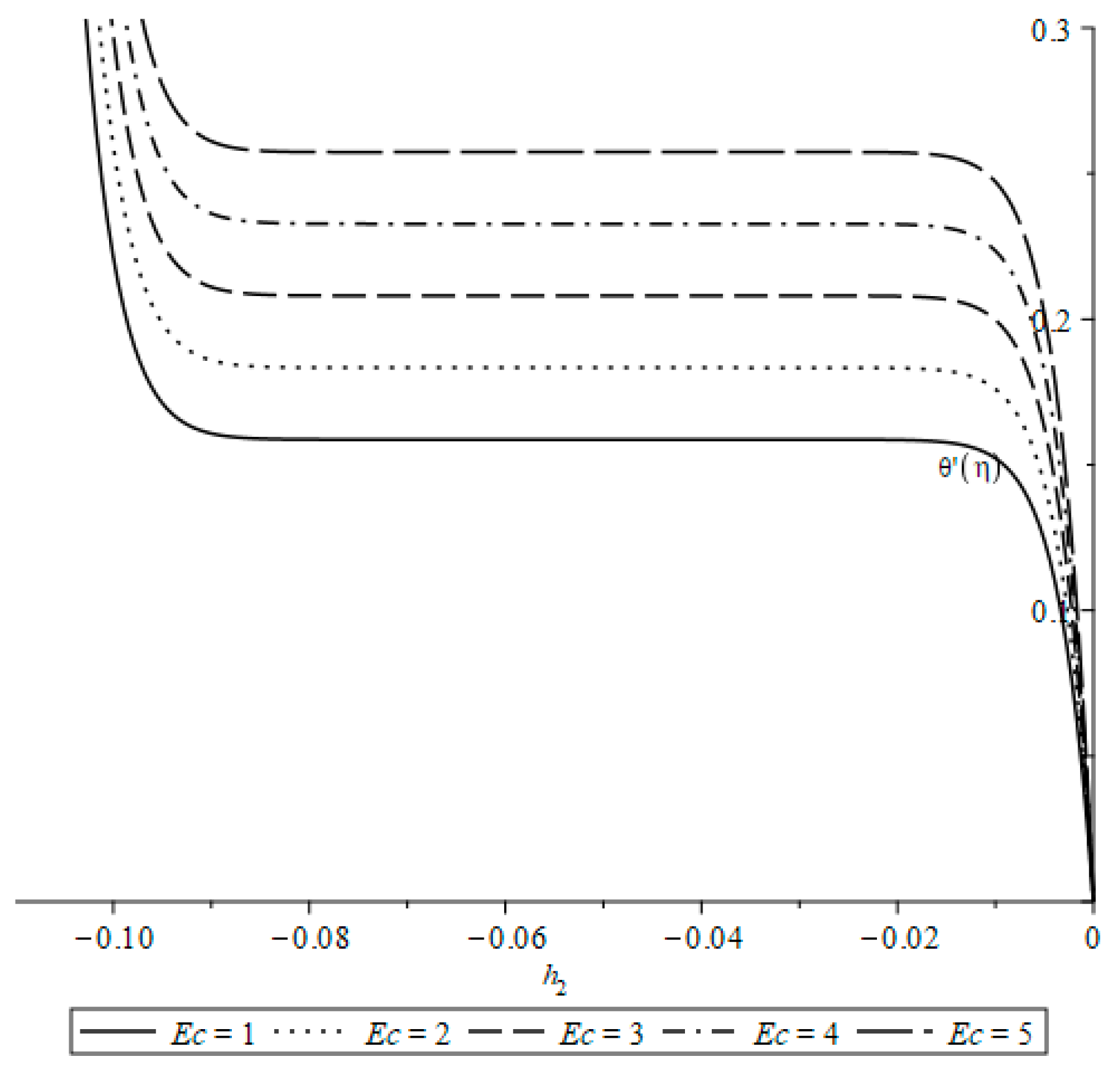
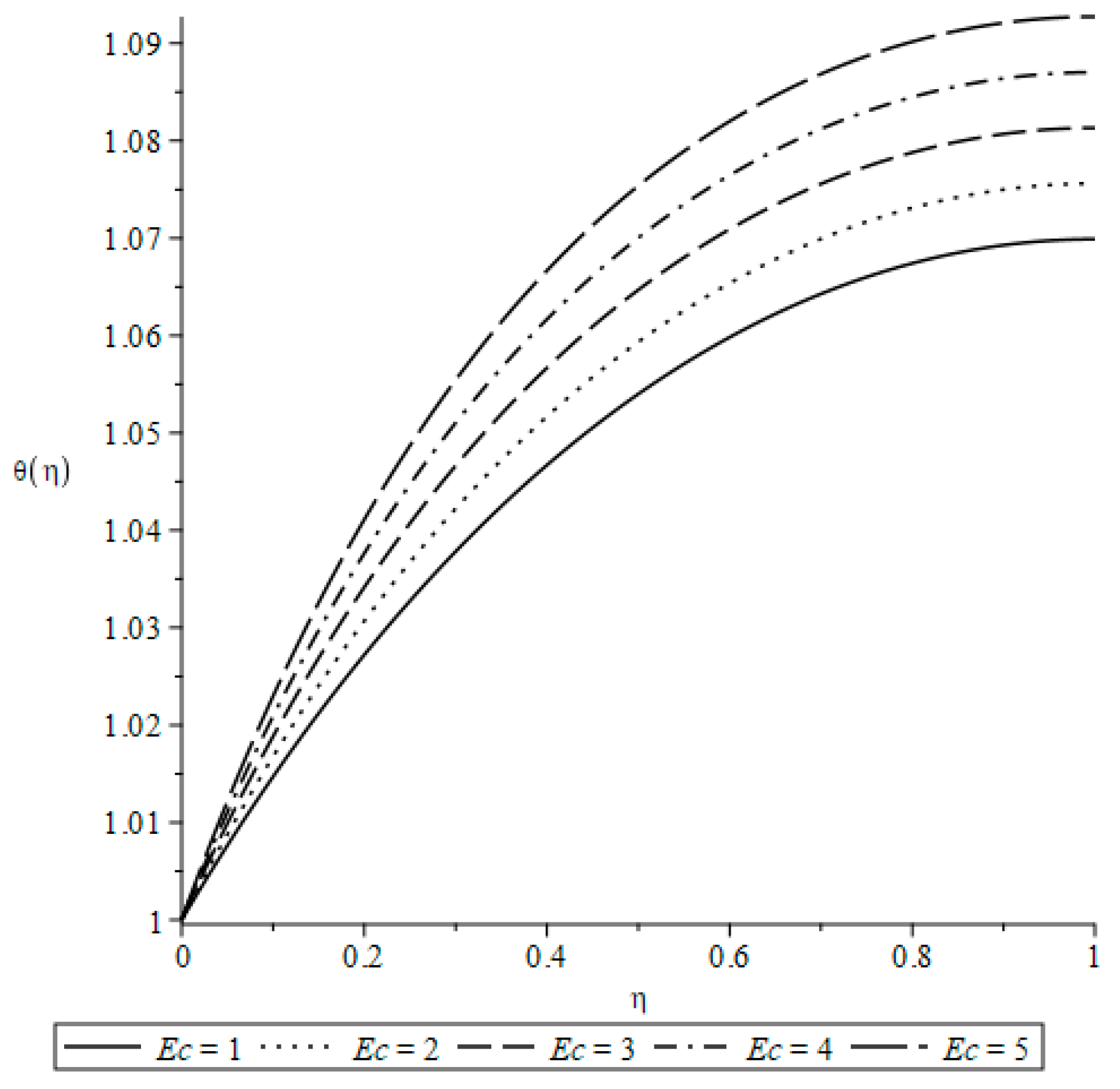
| Case | Symmetry | Invariants |
|---|---|---|
| 1 | ||
| 2 | ||
| 3 | ||
| 4 |
Disclaimer/Publisher’s Note: The statements, opinions and data contained in all publications are solely those of the individual author(s) and contributor(s) and not of MDPI and/or the editor(s). MDPI and/or the editor(s) disclaim responsibility for any injury to people or property resulting from any ideas, methods, instructions or products referred to in the content. |
© 2025 by the authors. Licensee MDPI, Basel, Switzerland. This article is an open access article distributed under the terms and conditions of the Creative Commons Attribution (CC BY) license (https://creativecommons.org/licenses/by/4.0/).
Share and Cite
Ahmad, H.; Iqbal, C.K.; Safdar, M.; Jamil, B.; Taj, S. Lie Optimal Solutions of Heat Transfer in a Liquid Film over an Unsteady Stretching Surface with Viscous Dissipation and an External Magnetic Field. Mater. Proc. 2025, 23, 7. https://doi.org/10.3390/materproc2025023007
Ahmad H, Iqbal CK, Safdar M, Jamil B, Taj S. Lie Optimal Solutions of Heat Transfer in a Liquid Film over an Unsteady Stretching Surface with Viscous Dissipation and an External Magnetic Field. Materials Proceedings. 2025; 23(1):7. https://doi.org/10.3390/materproc2025023007
Chicago/Turabian StyleAhmad, Haris, Chaudhry Kashif Iqbal, Muhammad Safdar, Bismah Jamil, and Safia Taj. 2025. "Lie Optimal Solutions of Heat Transfer in a Liquid Film over an Unsteady Stretching Surface with Viscous Dissipation and an External Magnetic Field" Materials Proceedings 23, no. 1: 7. https://doi.org/10.3390/materproc2025023007
APA StyleAhmad, H., Iqbal, C. K., Safdar, M., Jamil, B., & Taj, S. (2025). Lie Optimal Solutions of Heat Transfer in a Liquid Film over an Unsteady Stretching Surface with Viscous Dissipation and an External Magnetic Field. Materials Proceedings, 23(1), 7. https://doi.org/10.3390/materproc2025023007




